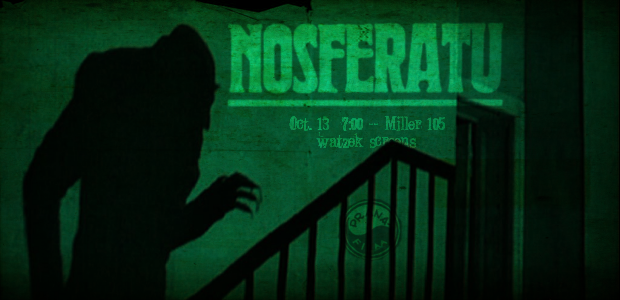
One has to wonder what actually succeeded among German moviegoers during the 1920s, since most of the films now lauded as classics were so maligned in their day. Amazingly, given its accessibility and continued fame nearly a century on, F.W. Murnau’s Nosferatu, a Symphony of Horror falls into that sad category. It was the first effort by the newly-formed Prana-Film, one of the first “indies” that attempted to compete with the state-sponsored Universum Film AG, or UFA, which enjoyed a virtual monopoly in German film production. But an unexpected intervention by outside parties ensured that Prana-Film’s first release would also be its last.
German-born Murnau himself came from a comfortable life, if harsh and disciplined by today’s standards. Formally trained as an art historian, he abandoned an early painting career after realizing his efforts were, in his own words, “like Raphael without hands.” His time spent as a reconnaissance pilot in the First World War and the death of a close friend altered him considerably, and Murnau, already fragile psychologically and physically, withdrew further into himself. His alienation was not helped by his hidden homosexuality; or, to be more precise, its legal interpretation as defined by Paragraph 175 of the penal code, Germany’s infamous and long-standing law on “unnatural fornication” that equated homosexuality with bestiality. Although there was an increasing grass-roots call for 175’s repeal from 1919-1929, there was a parallel movement for its expansion, which would ultimately come to fruition under the Nazis in 1935. Thus, much of Murnau’s private life, compared to egocentric peers like Fritz Lang, remained shrouded in mystery for many years.
His first project, an anti-war film, never got off the ground due to the overall unwillingness from financial backers (the topic was not broached on German celluloid until its literature ventured there first.) Falling in with other artist friends with connections, his luck improved. Subsequent projects, including an early version of Strange Case of Dr Jekyll and Mr Hyde starring Conrad Veidt from The Cabinet of Dr. Caligari, are now sadly lost through a combination of bombs, neglect and nitrate. With 1921’s Schloß Vogelöd (The Haunted Castle), some took notice of his knack for horror, and Prana-Film, formed by filmmakers with an affinity for the occult, approached Murnau with their idea.
Inspired by Hugo Steiner-Prag’s illustrations for Gustav Meyrink’s fantastical novel The Golem (1915), Nosferatu took its design aesthetic from an entirely different source than the cliched, 19th-century Victorian romanticism that so defined the vampire genre of the day. There was nothing suave, debonaire, or attractive about the ratlike vision put forth by Murnau and actor Max Schreck, a then-unknown that, due to his last name meaning “to frighten or terrify” in German, many believed to be a pseudonym for some more prominent actor who wished to remain anonymous. Unlike his peers, Murnau abandoned the elaborate studio sets and filmed on location in parts of Poland and Czechoslovakia, which was virtually unheard of in those days.
It is, of course, all the more ironic and satisfying that what became the quintessential vampire film in the history of cinema is the very one ordered destroyed by the Stoker estate. The film’s producers naively believed that altering the storyline and changing names could circumvent rights claims by Stoker’s widow. The courts didn’t see it that way. At her request, all prints were to be recalled from distribution and destroyed immediately. One print leaked out to the international market and never made its way home; that was the oft-circulated legend anyway. As it turns out, prints surfaced piecemeal for decades and were slowly reconstructed to match Murnau’s production notes, including tinting specifications–many black-and-white German silent films were intended to be screened this way–and mood preferences for the score.
Murnau emigrated to Hollywood and made Sunrise: A Song of Two Humans, which was nominated for an Academy Award and still believed by many to be his greatest work, despite his disillusionment with the American system. In 1931, he died in a car accident in California, at the age of 42.
At this late stage, the massive gaps in Murnau’s oeuvre will likely never be filled, with fewer and fewer lost films being discovered from the “archives” of broom closets and theater basements. But as a recent jackpot of “lost” John Ford films found in New Zealand shows us, film preservation can often take freakish and unexpected turns.
